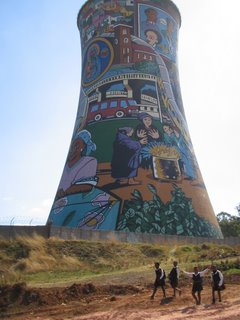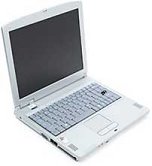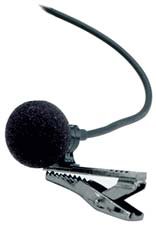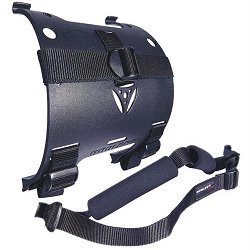
On the morning of my first day in South Africa I spoke to the owner of the hostel I was staying in about my project. He offered to introduce me to a driver who he believed would be able to help me gain access to some of the areas I was interested in. He made a phone call and an hour later I was greeted at the gate by Arnold, a soft spoken South African who shook my hand and asked me what I would like to see. We spoke for a while in the comfort of his decades-old Mercedes and then we sped off into the city.
Hillboro, our first destination, had once been a prosporous area, famous for its pubs and restaraunts. It still bosts ironic names such as Greenwich village and times square. It was now disidedly the most crime ridden of the slums of Johannesburg. Arnold assured me that our visit would be short and relatively safe. It was obvious when we had arrived. The streets were teeming with people. Many of the buildings were literally crumbling.
He brought the car to a brief stop to point out a group of kids that he said sniffed glue. I sat there feeling awkward starring at the desperate looking kids sitting on the curb just a few feet away. Looking dazed, they graually noticed me, and when we made eye contact it was obvious that my presence was as strange a thing for them as it was for me. Not knowing what else to do I gave a little wave which was returned before Arnold sped off. In this way we moved through the city streets, pausing only long enough for him to point something out and then driving off once I had been noticed.
Arnold turned out to be an excellent guide and readily offered an explanation for everything we saw. For instance, if a man has a bit of goatskin tied around his wrist or a number of small parallel scars on his cheeks he is a Zulu. A Nigerian coke dealer can apparently be identified by his long pointy shoes. He described how gangsters use heavier cars to crash into cash carrying vans causing them to flip over, and then saw off the roof, shoot those inside and make off with the cash. Much of what he said hinted at the tension that exists between black south Africans, as according to him different ethnic groups were responsible for the various problems that plague South Africa.
At one point we stopped and he directed me to look down an avenue to where a number of people could be seen standing around. "I would not take you down there" he said, "Someone would approach the car believing that we wanted drugs, and then we could get into trouble." I was glad that he didn't and happier still when he said that we were leaving Hillboro.
Our next stop was houghton, just on the other side of the hill that gives hillboro its name. It would only have been a ten minute walk, but my guess is that few ever do, in either direction. The Juxtuposition is staggering; suddenly we were on wide tree-lined streets, craning our necks to catch glimpses of the mansions that could be seen over the high walls that surrounded each property. We got out of the car and peered through some of the gates to see manicured gardens, swimming pools, tennis courts and other signs of wealth.
When I asked Arnold what kept the crime from Hillboro from spilling over into here, he replied that "those people could not come here, because they would be recognized at once as people who did not belong." It was pretty obvious what role race played in this. He pointed to a shed outside of the entrance to one of the homes. In it was a security guard sitting watching monitor screens. "That man would stop any man walking on the street who looked suspicious. If they were not able to provide proof of their business here, as well as the address of where they were going, they would not be allowed. When a crime is committed here, the response from the police is so rapid that few get more than a block before they are caught." Indeed every house had a call box, an electric fence, and a sign displaying the various security companies whose services the occupants employ.
Our final stop was a visit to the tallest building in Africa. For seven Rand we took the elevator to the "top of Africa" and took in the panaramic views of Johannesburg. Even from this elevation you could make out the patchwork of poverty and affluence from the greeness of the trees or the drab brown of different areas. At the city's edge ochre-colored mountain ranges were heaped here and there. "These are not mountains" Arnold said, "they are the excrement of the mines that are the foundation of this city."
















 Next I looked into the use of different lens adapters. I went back to the camera store and experimented with the few that fit my camera. The lens that I believed would be most effective for what I was doing was a fisheye lens. A fisheye lens uses a series of concave lenses to bend the image in view. I found that with the fisheye I had a much wider field of view, which would be useful for capturing landscapes and larger scenes. It also created a sense of depth as the peripheral portions of the footage appeared to curve and move more quickly from the field of view as the camera moved towards a subject.
Next I looked into the use of different lens adapters. I went back to the camera store and experimented with the few that fit my camera. The lens that I believed would be most effective for what I was doing was a fisheye lens. A fisheye lens uses a series of concave lenses to bend the image in view. I found that with the fisheye I had a much wider field of view, which would be useful for capturing landscapes and larger scenes. It also created a sense of depth as the peripheral portions of the footage appeared to curve and move more quickly from the field of view as the camera moved towards a subject.






